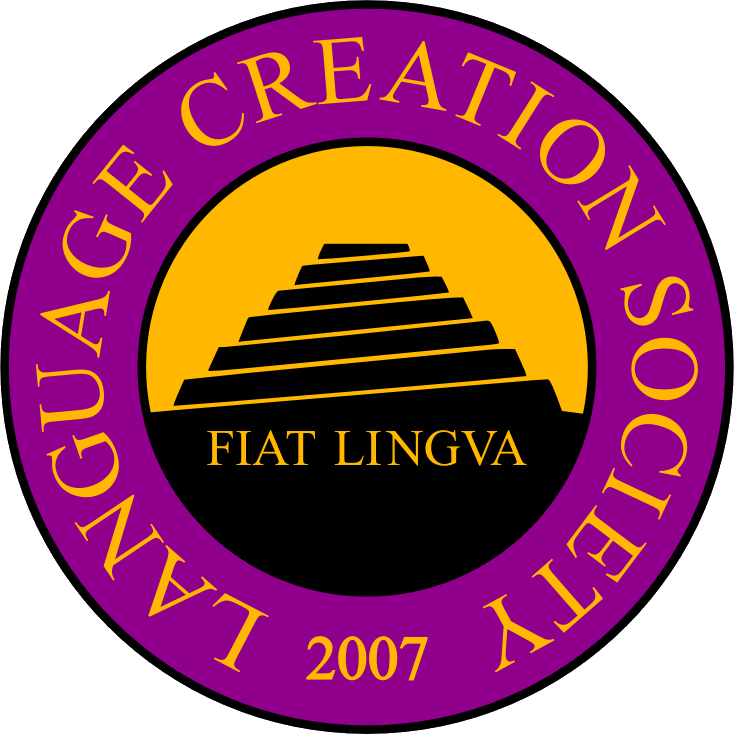LCC5 Presenters and Posters
Presenters
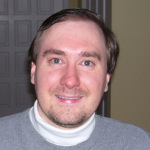 Doug Ball |
Lexical Expansion and Lessons from LexemberThe first Lexember, last December, was the largest single-month expansion of the Skerre lexicon in years. As I endeavored to add a new word each day, I noticed that the task of creating each day’s word quickly evolved into a daily small-scale research project. In this talk I will discuss the notable theoretical and practical aspects of these small-scale research projects. On the theoretical side, the addition of new words meant that I was forced to consider (or re-consider) how the morphological constructions that I had previously invented interacted with the “real-world” meanings I was intending to attach to my new words — and to confront what these morphologically constructions “really mean”. This activity also forced to me consider general questions about how a given language might express particular meanings, given the tendencies found in natural language morphology and lexical semantics. To try to better deal with these latter issues, I ended up utilizing an interesting and maybe not completely obvious practical resource: Wiktionary. Though imperfect in some ways, I found that the etymology and translation sections of Wiktionary entries can be used as a means to get a rough-and-ready picture of how certain meanings are encoded cross-linguistically. As a conlanger who likes his conlang(s) to have a strong natural language basis, these cross-linguistically investigations and the decisions I made from them left me more confident that what the lexicon that I was building up was fairly natural yet interesting while avoiding any obvious relexification of English. |
| Doug Ball began conlanging in 1994, primarily working on the Skerre language, a naturalistic conlang spoken by fictitious Mesolithic hunter-gatherers living on a continent similar to North America. His conlanging interest led him to discover the field of linguistics and ultimately to a career as an academic linguist. He is currently a member of the linguistics faculty within the Department of English and Linguistics at Truman State University in Kirksville, Missouri. | |
 Jasper Danielson |
The Art and Science of Constructed ScriptsWith both natural and constructed languages, the choice of script contributes greatly to the readability and appeal of the language. This raises the question: what makes certain scripts better or worse? Do certain letter features or sentence structures contribute to the aesthetic appeal of a script? This presentation will apply principles from art, psychology, and neuroscience to the design of constructed scripts that are both beautiful and easy to read. Over the course of the talk, I will present a concise, formulaic method to guide the script-creation process for any natural or constructed language. Towards the end of the presentation, I will also take a look at potential applications of constructed scripts outside the realm of language creation–including an examination of linguistic and mathematical shorthand scripts, as well as an exploration of the potential role of constructed scripts in primary and secondary education. |
| Jasper Danielson has always had a dual fascination for language creation and understanding how the mind works. He has been con-scripting since he was 13, though he has only recently begun his first work with a true conlang, Ryonic. Of particular interest to Jasper is the concept of a ‘true language’ that contains a direct representation of our cognitive understanding of the world. He is currently studying Cognitive Science, Mathematics, and Bioengineering at Rice University in Houston, TX. | |
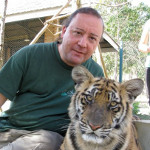 Tony Harris |
Living Your LanguageThere is a small handful of conlangers who tend to immerse ourselves in our languages and try to use them regularly and become really fluent in them. Although there are those who are more advanced in this area than I am, I have set a goal for this year to push my Alurhsa skills up to that level where I will be able to think, write, and essentially live, entirely in Alurhsa, other than, obviously, interactions with other people, since the Alurhsa-speaking community is unfortunately pretty small. How can a conlanger go about achieving this level of fluency in their conlang? This presentation will give tips, hints, and techniques used by myself and my friend and colleague, Jim Hopkins, and others, including adapted techniques from polyglot natlang learners for achieving that fluency even if one is not immersed in a place and culture where the language is spoken. I will also give my own experiences with these, what has worked well for me and what hasn’t. |
| Tony Harris has been conlanging for over 37 years, and working on his primary language, Alurhsa, for almost all of that, referring to it as “the language of his soul”. He has been engaged to varying degrees in the conlanging community since the mid 1990’s. In addition to Alurhsa, Tony is comfortable in French, Spanish, and Esperanto, and has dabbled in several other natlangs and conlangs. He lives in Central Vermont with his wife and cat, and is an Assistant Chief Technology Officer for the Community College of Vermont. | |
 Ted Hayes |
Language MachinesWhen we speak of constructed languages, we are usually speaking of human-designed languages with human-designed features. But what might it be like for machines to invent their own language? Language Machines explores the emergence of language among autonomous entities and the notion of language as convergent semiosis: a process whereby arbitrary signifiers become conventionalized among a group automatically and without special preparation. To study this effect, I built a group of electronic devices that are able to sense their environment and speak, and through their interactions, emergently develop a language for their experiences. These devices autonomously establish conventional signifiers for environmental stimuli by associating those stimuli with short sound patterns. |
|
Ted Hayes is a hacker-poet, conceiving objects and experiences that explore the sublime and the enigmatic through recombination, emergence and deconstruction. He is a proponent of what he has dubbed “Research Art”, or art as science experiment: a work driven by questions, but without obvious conclusions, that raises new questions while enveloping and engaging the audience. Ted’s works range from a group of language-inventing robots to a mythological city-founding ritual for soprano and string quartet, is a graduate of NYU’s Interactive Telecommunications Program, and is recently the recipient of a New Radio and Performing Arts commission. Ted has spoken on the subject of Research Art and Language Machines at TEDxGallatin, Crossing Arts Gallery and Dorkbot, and his work has been shown and performed at Grounds for Sculpture, TEDxBrooklyn, The Chelsea Hotel, ISSUE Project Room, NYCAMS Gallery, 319 Scholes Gallery, Theatrelab, Monkeytown and Brooklyn Bridge Park. See more of Ted’s work at log.liminastudio.com. |
|
 Jim Henry |
What I’ve Learned from my Mistakes with gjâ-zym-byngjâ-zym-byn is a personal language with no fictional historical context and which makes no attempt at naturalistic verisimilitude. Its real history, however, has been conditioned by my attempts (tolerably successful by now) to learn and use it. I’ll discuss several mistakes I made with the design of gzb and how I corrected them or learned to live with them, as well as some other developments it’s gone through to make it easier to use. |
| Jim Henry was born in 1973 in Decatur, Georgia, and has lived in the Atlanta area most of his life. He started creating constructed languages in 1989 after discovering Tolkien’s Quenya and Noldorin (in The Book of Lost Tales rather than his better-known works), but his early works were all vocabulary and no syntax. In 1996, after discovering Jeffrey Henning’s Model Languages newsletter and the CONLANG mailing list, he started creating somewhat more sophisticated fictional languages; and in 1998, he started developing his personal engineered language gjâ-zym-byn, which has occupied most of his conlanging energies since then, and in which he has developed some degree of fluency. He retired in 2008 after working for some years as a software developer, and does volunteer work for the Esperanto Society of Metro Atlanta, Distributed Proofreaders, and the Language Creation Society. | |
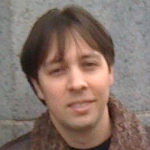 David Peterson |
Evolution of the Castithan Writing SystemMy goals in creating the Castithan writing system for Syfy’s Defiance were twofold: First, to create something that looked exotic to an English speaker, but not too out there (something that would’ve achieved the ubiquity of the Roman alphabet in an alien solar system), and second, to make it really, really unpleasant to use. In this talk, I’ll describe the system, and explain how I set about to achieve these goals. |
| David Peterson is the creator of the Dothraki and High Valyrian languages for HBO’s Game of Thrones, and the alien language and culture consultant for Syfy’s Defiance. He also serves as the president of the Language Creation Society. | |
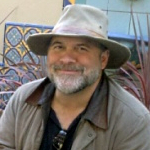 John Quijada |
Untightening Your Cryptotypes: Adding Covert Patterns, Advanced Oddities, and Little Irrationalities to Your ConlangThis presentation will discuss the subtleties of covert patterns and other hidden irregularities found in natural languages, illustrating ways of adding further realism and depth to one’s “natlang”-style conlang. The focus will be on morphology, morpho-syntax, and lexico-morphology, with an emphasis on topics not covered in most conlanging resources. We will explore cryptotypes, subtle patterns of ergativity in accusative languages, covert middle-voice patterning, co-active verbs, verb conflation, defective verbs, the lexico-semantic ranges of words, complementary lexical pairing, using fossilized/unproductive lexico-morphology, erroneous borrowings and folk etymologies, and other assorted oddities . Such features of language are often missing from artlangs, altlangs, and other natural-style conlangs; however, examples will be illustrated from a few conlangs which are exceptions. |
| John Quijada is the creator of Ithkuil, a philosophical language he worked on over the course of three decades, recently featured in the New Yorker magazine. John previously gave presentations on cognitive linguistics and phonaesthetics at the first two Language Creation Conferences. He has a degree in linguistics, speaks five languages, and with his twin brother has co-authored a novel, Beyond Antimony, that explores the philosophical implications of quantum physics. In addition to conlanging, he enjoys a wide range of hobbies and interests including travel, eclectic literature, sci-fi, classical and world music, philosophy, art appreciation, cinema, electronic (MIDI) music synthesis, amateur astronomy, amateur protozoology, cooking and fine wine. He lives in Northern California with his wife and two cats. | |
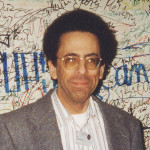 Jim Rosenberg |
The Interactive Word ObjectThis talk presents background and characteristics of a new arena for language construction: interactive word objects. It is not controversial that today, nearly all text is created and maintained on interactive computer systems. This talk explores the implications of bringing the interactive object paradigm inside language itself. Word objects have a long and ancient history / prehistory. The invention of writing indisputably turned the text into a physical object. There is significant evidence that in Mesopotamia at least, writing originated from Accounting, with physical objects (bullae, tokens, seals) likely playing a key part. In today’s environment, not only does text occur on machines, we may ask if units of text are machines. In many areas of life, generative text occurs: the text can be a machine. Surely a grammar is a machine. With the RFID badge, your name is a machine. Bringing machine-based interactivity down to the level of the morpheme offers both challenges and opportunities. Among the opportunities are: support for fully non-linear writing, escape from the limits of topology, externalization of structures too difficult to comprehend by sound in real time, and an open arena for the invention of new forms of word behavior. Challenges range from problems affecting software at large, such as bugs and security issues, to issues of intellectual property. How will it happen in the real word? Back to the future: as in Mesopotamia, there is reason to look to Accounting for where the morpheme may become an interactive machine. |
|
Jim Rosenberg was born in 1947. His work has included a wide variety of forms including linear work, works for multiple voices both live and on magnetic tape, and word environments constructed in San Francisco and New York. He began a life-long concern with non-linear poetic forms in 1966, with a series of polylinear poems called Word Nets. By 1968 this concern had evolved to an ongoing series of Diagram Poems, which continues to the present.This body of work includes Diagrams Series 3 and Diagrams Series 4. Since 1988 his work has consisted of interactive poems, beginning with Intergrams, followed by Diffractions through: Thirst weep ransack (frailty) veer tide elegy and The Barrier Frames: Finality crystal shunt curl chant quickening giveaway stare. Diagrams Series 5 and Diagrams Series 6 are available on the World Wide Web at http://www.well.com/user/jer/inter_works.html. He is the author of numerous essays and papers, a collection of which, Word Space Multiplicities, Openings, Andings: Collected Essays and Papers in Digital Poetics, Hypertext, and New Media, is forthcoming from University of West Virginia Press in the Fall of 2013. |
|
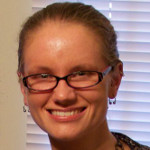 Jessie Sams |
From /p, t, k/ to Potake: Moving from Sounds to WordsTwo years ago, I began teaching a course called Invented Languages at my university. Throughout the course, students are presented with information on linguistics and typology in order to create their own language; for the final project, students write a mini-grammar of their invented language. While working with students on their languages, I find that one of the biggest hurdles for them is to move from creating a sound system to creating words in their language without simply copying another language or throwing words together in such a random way that there are no patterns within the vocabulary. My talk will focus on techniques I have used with my students, including methods to keep track of a growing vocabulary (and the proposed sound system), exercises for putting concepts into semantic categories, utilizing word-formation processes to take old words and make new ones, and understanding the ramifications of choosing to create an analytic versus synthetic language. |
| Jessie Sams is an Assistant Professor of Linguistics at Stephen F. Austin State University and began conlanging when she was 8 years old. Not surprisingly, her first languages were not actual conlangs, but creating them left her with a love for invented languages. Since then, she has completed one full conlang (along with several naming languages that may one day become complete) and is working on her second while helping a writer develop a language for her short story. | |
 Bill Spruiell |
Bureaulangs and the Peculiar Potential of the Uncooperative PrincipleAs Jack Vance noted in The Languages of Pao (1958), and as viewers of Yes Prime Minister (1986-8) are well aware, linguistic codes can be powerful engines of changelessness. Grice’s (1975) “Cooperative Principle” suggests that speakers attempt to work together to arrive at meaning, and a wide variety of characteristics of both natural and constructed languages can be seen as creating cues that aid in such cooperation. However, there are types of interaction in which following the CP will not benefit one or more of the interacting parties, and for language-construction purposes, it may be useful to consider what would happen if, in a particular socio-historical situation, forces favoring uncooperativeness played a major causal role in language policy. This paper will argue that the nexus of language-standardization and control of power structures inherent in large-scale bureaucracies provides a context in which such a situation could naturally arise, and explores the idea via an outline of Yešquur a bureaucratic language in which the only standard form is officially nonstandard and the value of grammaticality judgments is inversely proportional to the number of speakers agreeing with them. |
| Bill Spruiell teaches linguistics—and occasionally sci-fi/fantasy literature—at Central Michigan University, where he is still attempting to learn all eighty Michigander words for snow. | |
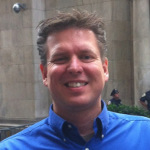 Jim Van Manen |
How Pinocchio Becomes a Real Boy: The Journey from Invented to Regularized Language—The Case of FingerspellingAmerican Sign Language (ASL) incorporates the use of a one handed fingerspelling system that conveys the written Roman alphabet that was created by a monk named Yebra in the late 1400s to remember prayers. This alphabet was stolen, republished in 1820, and then used by numerous signed languages. It came to the US in the early 1800s and its form has been changing since its creation. Based on a study of 200 hours of film of fingerspellers from 1910-2013, I have studied the lexical and morphological components and processes involved in these changes over time in ASL Fingerspelling. These findings have implications for all invented languages and invented lexical components as they journey from the invented into regularized language forms and these processes will be discussed. |
| Jim Van Manen holds a Ph.D. in Administration and a Master of Arts in Linguistics of signed languages, both from Gallaudet University. Jim is an assistant professor at Columbia College Chicago in the ASL-English Interpretation Department and is a speaker who presents on a variety of topics including ASL Fingerspelling, Deaf Art, Interpreting Humor, Deaf History, Linguistics, and the Americans with Disabilities Act. He recently had a biography of the life of Deaf artist, Ann Silver published called, “Ann Silver: ONE WAY, DEAF WAY”. Most of her work pertains to artistic use of written language and since the book, Jim and Silver have started making some art together. Jim has been a Star Trek fan since birth and a Star Wars fan since the series came out. He has also has always loved the writing of J. R. R. Tolkien and Robert Heinlein. | |
 Britton Watkins |
Fonts for Computer-based CreativityThis presentation will focus on the step-by-step process of turning an existing paper-based conscript design into a working font, with heavy focus on the concepts required to master each phase of the development. After engaging in this presentation you should understand:
The model con-script used to demonstrate the concepts above will be Tony Harris’ own handwriting version of his con-script for Alurhsa (http://alurhsa.org). |
| Britton Watkins is one of the newest members of the LCS. He only really became intensely interested in con-langs as of becoming a member of the Na’vi-learning and -speaking community from its inception in late 2009~early 2010. Prior to that he’s always been fascinated by virtually all nat-langs—which he personally thinks of as organic languages—and specifically the evolution of orthography as a human tool. He’s spent roughly 8 years of his adult, professional life living and working in Japan, has studied Thai and Mandarin, still remembers some Spanish from his teenage years, and recently began learning Cherokee. He’s developed several franchise-artwork-inspired orthographic systems for the fan-created Golic Vulcan language (http://korsaya.org/writing-•-pa’kitaun/), designed and fabricated many fonts for Jim Hopkins for Itlani (http://itlani.conlang.org), and is currently fleshing out the original language Siinyamda as orthographically enhanced props and set pieces become required for his husband’s film, Senn (http://sennition.com). | |
 Zachary Weaver |
Set Semantics in the Davin LanguageDavin is a constructed language designed to have an extremely simple grammar consisting of only ten grammatical words and two word classes. The two word classes aŋtah, which act as base sets, and owpys, which act as filters on these sets to narrow meaning. Though designed to be easily understood by humans, every Davin iprid, or sentence, can be translated to a set formula and predicates which provide a method for formalizing the semantics of the language. It is not necessary to understand this foundation in order to speak the language, but is of academic interest for logical language enthusiasts. I will discuss in detail how this transformation to set theoretic notation is performed and how the results are to be interpreted as communication. I further explore how the grammatical structures allow the speaker to create new classes and relationships not previously present in the language. |
| Zachary Weaver is a senior Mathematics and Computer Science Major at the University of Pittsburgh at Johnstown. He works at CTC on various research projects involving neuroscience, robotics, operations research, and natural language processing. Linguistics has always been a tangential passion for him. He has studied many con-languages, but he is most active in the Lojbanic community. One may contact him via zearen.wover@nullhotmail.com, or via the ##conlang channel on the Freenode IRC network. | |
Posters
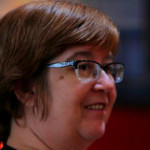 Rie Sheridan Rose |
The Elven Language of The Luckless PrinceRie Sheridan Rose is presenting a poster of her constructed language. The language was created from scratch after attending a class in the Languages of Science Fiction at the University of Texas using the principles of language construction taught in that class. It is used in the book THE LUCKLESS PRINCE from Zumaya publications, and includes a glossary and brief description of the grammar. |
| Rie Sheridan Rose has been writing professionally for over ten years, first under Rie Sheridan, and more recently adding the Rose. In that decade, she has published 5 novels, 1 short story collection, 2 chapbooks of collected stories, and 5 poetry collections as well as contributing to several anthologies. Her stories have also been published in The Eternal Night, ShadowKeep, and Verge ezines, as well as the EOTU and Planet Relish websites. Her poetry appeared in the print magazines Mythic Circle, Dreams of Decadence, and Abandoned Towers as well as the Electric Wine and Tapestry ezines. She has also written lyrics for musician Marc Gunn. Their “Don’t Go Drinking With Hobbits” CD is the first released under their collaboration. | |
 Jessie Sams and Students |
Leaving Rome Behind: Using the iFontMaker App to Create a New Writing System.In an Invented Languages course at Stephen F. Austin State University (Nacogdoches, TX), students work the entire semester to create a language, including a writing system. Some students choose to use the Roman alphabet or another existing alphabet (like Cyrillic or Greek) to write their language; however, others choose to create an entirely new writing system. One of the challenges of creating a writing system is writing out examples of the language; since hand-drawn shapes can’t exactly be typed, each example of written language has to be handwritten unless a font is developed for the written language. Several students in the course have done just that: They used the iFontMaker app to create a new writing system so that they could actually type in their language. This presentation will provide examples of the different styles and types of writing systems they have created using the app—including abjads, syllaberies, and alphabets, and including languages written both horizontally and vertically. |
| Students from Stephen F. Austin State University: Mark Ervin, Leslie Hill, Kelsey Nixon, Chelsea Sabella, Brody Wedgeworth, and Renee Williams | |
